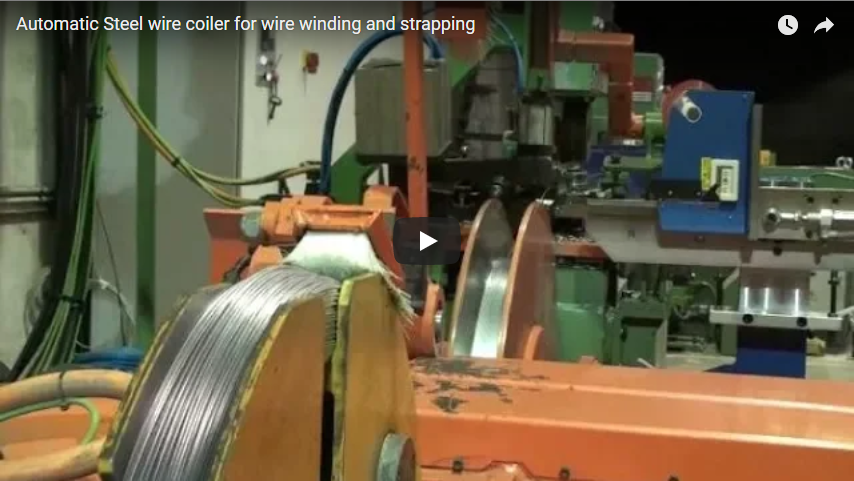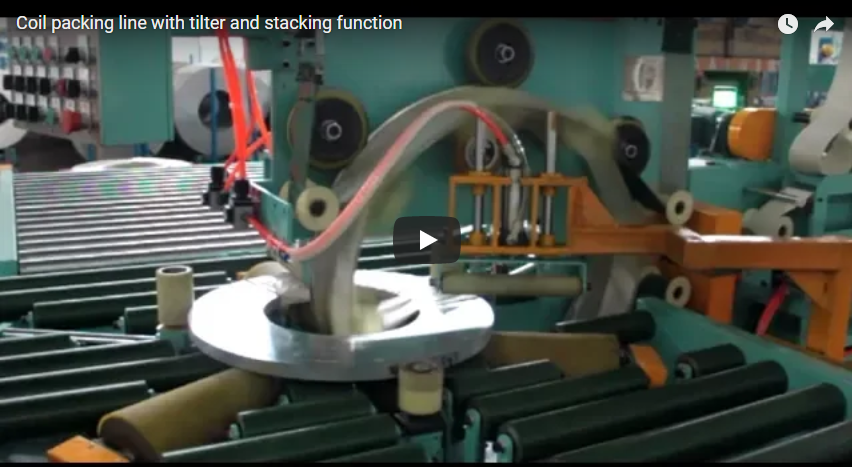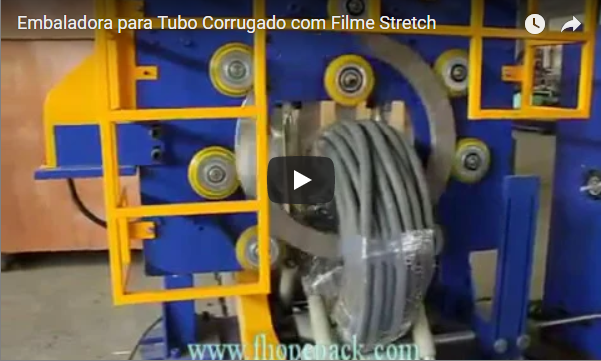Precision Engineering: Advanced Technologies in Steel Strip Coil Packaging
An automatic steel strip coil packing line represents a critical investment in the steel manufacturing and processing sector, providing an integrated solution for securely wrapping and protecting steel coils prior to shipment. This automated system systematically applies protective materials, such as VCI paper, plastic stretch film, or Hessian cloth, and secures the coil with robust strapping, ensuring comprehensive protection against environmental factors like moisture and dust, as well as physical damage during handling and transit.
1. Operational Overview and Core Functionality
The typical operational sequence of an automated steel strip coil packaging line involves several precision-engineered stages:
- Coil Loading: Steel strip coils are automatically or semi-automatically fed onto the line, often via conveyor systems or coil cars.
- Centering and Positioning: Advanced sensors ensure the coil is precisely centered within the packing station to guarantee uniform wrapping and strapping.
- Protective Wrapping: The system applies selected protective layers (e.g., VCI paper for corrosion inhibition, stretch film for moisture barrier) around the coil's circumference and potentially through the eye, depending on configuration.
- Strapping: Steel or high-tensile polyester bands are automatically applied radially or circumferentially at predetermined intervals and tensions, securing the protective layers and adding structural integrity to the package.
- Labeling & Weighing (Optional): Integrated systems can apply identification labels, weigh the final package, and record data for tracking and inventory management.
- Unloading: The fully packaged coil is automatically discharged from the line, ready for storage or shipment.
Modern lines leverage sophisticated sensor arrays and programmable logic controllers (PLCs) to adapt dynamically to coils of varying dimensions (inner/outer diameter, width) and weights, optimizing material usage and cycle times for maximum efficiency and reliability.
2. Key Design and Structural Features
Built for demanding industrial environments, these packaging lines typically feature:
- Heavy-Duty Construction: Robust steel frames and structural components designed to withstand continuous operation and heavy loads.
- Modular Design: Often allows for customization and integration of specific modules (e.g., different wrapping heads, additional strapping units, inspection stations) based on user requirements.
- Wear-Resistant Components: Critical parts like rollers, guides, and wrapping/strapping mechanisms are made from durable materials to minimize downtime and maintenance.
- Accessibility: Thoughtful design considerations for maintenance access points to streamline servicing and reduce operational interruptions.

automatic coil packing line for steel coil 3. Core Components and Technology
The automation and precision of these lines rely on advanced components:
- Programmable Logic Controller (PLC): The central processing unit managing all machine functions, sequences, and interlocks. Allows for flexible programming and process adjustments.
- Human-Machine Interface (HMI): Typically a touchscreen interface providing operators with real-time status monitoring, parameter adjustments, diagnostic feedback, and alarm management. Often multilingual.
- Sensor Technology: Photoelectric, inductive proximity, and laser sensors detect coil presence, measure dimensions, monitor material feed, and ensure correct positioning throughout the process.
- Wrapping/Strapping Heads: Precision-engineered mechanisms responsible for applying packaging materials and straps accurately and with consistent tension.
- Drive Systems: Variable frequency drives (VFDs) often control motor speeds for conveyors, wrapping rings, and strapping heads, enabling smooth operation and energy efficiency.
4. Technical Specifications Overview
Please note: The parameters listed below serve as a general reference and may not exactly match the specific equipment shown in the video. For precise specifications tailored to your application, please contact us directly.
- System Type: Fully Automatic Steel Strip Coil Packing Line
- Coil Material: Primarily Steel Strips (Hot-rolled, Cold-rolled, Galvanized, etc.)
- Compatible Packing Materials: VCI Paper, Stretch Film (LLDPE), HDPE Film, Hessian Cloth, Crepe Paper
- Compatible Strapping Materials: Steel Band, Polyester (PET) Band
- Typical Coil Size Range:
- Inner Diameter (ID): 450mm - 800mm (customizable)
- Outer Diameter (OD): Up to 2000mm (customizable)
- Width: Up to 650mm (customizable)
- Indicative Cycle Time: Approx. 40-90 seconds per coil (varies with coil size and packing requirements)
- Estimated Throughput: Up to 120 coils per hour (dependent on cycle time and line configuration)
- Power Requirements: Typically 415V, 50Hz, 3-Phase (configurable to regional standards)
- Approximate Machine Footprint: Length: ~15000mm; Width: ~8000mm; Height: ~5000mm (highly variable based on configuration)
- Control System: Advanced PLC (e.g., Siemens, Allen-Bradley) with Touchscreen HMI
- Operator Interface: Intuitive, multilingual HMI
- Safety Features: Emergency stop circuits, safety fencing/light curtains, shielded moving parts, overload protection, status indicators.
- Automation Level: High (Fully Automatic) with provisions for manual intervention/override.
- Integration: Can be designed for integration with existing MES/ERP systems.
- Maintenance: Predictive maintenance alerts (optional), accessible components, optional annual maintenance contracts.
5. Advantages of Automated Steel Coil Packaging
Investing in an automated line offers significant operational benefits:
- Enhanced Product Protection: Consistent application of protective layers minimizes risk of corrosion, moisture ingress, and physical damage.
- Increased Throughput & Efficiency: Significantly faster than manual packing methods, reducing bottlenecks and increasing overall output.
- Reduced Labor Costs: Automation minimizes manual handling requirements, freeing up personnel for other tasks.
- Improved Workplace Safety: Reduces risks associated with manually handling heavy coils and sharp strapping materials.
- Consistent Package Quality: Ensures every coil is packed to the same standard, enhancing brand reputation and customer satisfaction.
- Optimized Material Usage: Precise control over wrapping and strapping reduces material waste.
6. Industry Applications and Use Cases
6.1 Heavy Machinery Manufacturing: Ensuring Component Protection
In heavy machinery production, steel coils are foundational materials. This automated line ensures these critical inputs are impeccably protected from environmental corrosion (rust) and handling damage (scratches, dents) during storage and transit. By applying tailored protective layers like VCI paper and durable films, the system maintains material integrity, preventing costly rejects and ensuring the quality of final manufactured components, thereby reducing material wastage and enhancing product reliability.
6.2 Construction Industry: Streamlined Material Handling & Logistics
Timely delivery of undamaged materials is paramount in construction. The automatic steel strip coil packing line accelerates the preparation of steel coils for shipment, ensuring they arrive at job sites protected and ready for use. This streamlined process minimizes the risk of transport damage, maintaining the structural integrity vital for building safety and standards compliance, ultimately helping to keep projects on schedule and reducing logistical complexities.
6.3 Automotive Industry: Supporting Supply Chain Efficiency
The automotive sector relies on lean manufacturing and just-in-time (JIT) inventory systems. The high speed, consistency, and reliability of this automated packing line directly support these principles. It ensures a continuous, uninterrupted supply of perfectly conditioned steel strips—essential for body panels, frames, and other components—preventing costly production line stoppages and helping manufacturers meet demanding production targets and quality standards efficiently.
7. Operational Considerations and User Experience
From an operational standpoint, integrating an automated steel coil packaging line requires consideration of:
- Layout and Integration: Ensuring sufficient floor space and seamless integration with upstream (slitting lines, annealing) and downstream (storage, shipping docks) processes.
- Operator Training: While highly automated, operators require training on the HMI, basic troubleshooting, and safety procedures. Intuitive interfaces minimize the learning curve.
- Maintenance Schedule: Adhering to recommended preventive maintenance schedules is crucial for long-term reliability and optimal performance. Access points designed for ease of maintenance are a key usability feature.
- Material Logistics: Efficient supply systems for packaging consumables (film rolls, VCI paper, strapping coils) are needed to keep the line running continuously.
The overall user experience is enhanced by the system's reliability, the quality of the final package, and the inherent safety improvements over manual methods. Real-time feedback via the HMI allows for proactive management and quick resolution of any operational issues.






